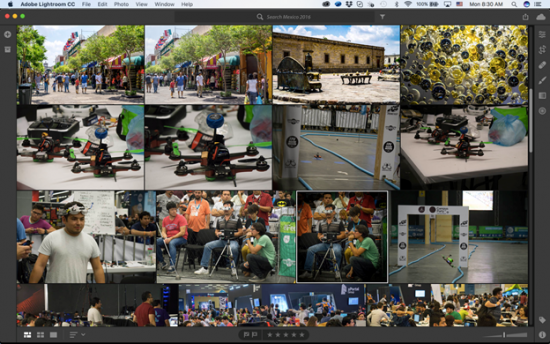Looking forward to Harry Potter rather than The Terminator; magic over machines.
The overweening theme at this year’s Max is extending creative tools to everyone and brand new apps unveiled this year are enabling the creativity that resides in everyone. In addition, the new apps seem to be built on a continuum that reaches from absolute beginners to professionals and occasional users to lifers.
This year Adobe Max was held in Las Vegas. Executive VP and General Manager Bryan Lamkin told the audience that this year the company is rolling out the biggest upgrades ever for its flagship products and a range of apps with the broadest appeal ever. Noting the size of the Sands theater, Lamkin also noted that the conference had also attracted the largest audience ever. Attendance was at 12,000 at the start of the conference. We’ll be doing the best we can to cover all the new announcements coming out of Adobe with this year’s Max. But it’s worth starting with the new apps announced the first day of the conference, Adobe XD, Dimension, Spark, and Lightroom CC, a new cloud-based version of the Adobe’s popular photography tool.
Rethink photo editing
A major release from Adobe is an overhaul of an old favorite, Lightroom. Yes, Lightroom, introduced in 2006, now qualifies as an old favorite. Lightroom CC is now the name of a new cloud-based version. The original Lightroom will now be known as Lightroom Classic and will continue to be updated. Lightroom CC is designed to suit modern photographers, who often work on multiple machines with assistants. Shantanu Narayen says that the new Lightroom CC is an example of future directions for Adobe. By allowing artists to store all their photos in the cloud (Lightroom CC comes with 1 terabyte of storage), they open up access to the photos from any device or location. The company says it’s faster. And perhaps most important from Adobe’s view, is that the giant bank of images in the Creative Cloud provides raw data for Sensei, Adobe’s artificial intelligence engine, to work on. It can take images and classify them according to subject, lighting, color, and even quality. At least that’s the plan. This is just the start of a longer road. Sensei already has all the data in Adobe Stock to work with and as time goes on and permission is granted all the pictures that live in Adobe’s cloud via Lightroom CC. Adobe says it will not use customer data without permission, but they believe most people will opt-in in return for better photo editing.

Lightroom CC is not quite ready for prime time. The cloud-based version is missing some of the features that are in Classic including the tone curve and split tone panels, camera profiles and soft proofing, hierarchical keywords, extended metadata, merging for HDR and panorama, smart collections, support for third party plugins, output options such as print, book, slideshow and map, and color and luminance range masking among others. Some of these are new features, some are professional features, and some will be a deal killer for some people, which is why Adobe has promised to continue to support the Classic version until everyone is happy.
Sensei, sense you
Right now, it seems Sensei hasn’t had enough time to go to work. I asked to see all my pictures taken in New York and I got city skylines including Taiwan, and San Francisco, but no New York photos at all. I asked to see pictures of children and I got some children and also old people. I guess everyone is someone’s child. Nevertheless, I’m onboard and I can’t wait to see how this experiment with the creative hive mind of Adobe works out. Adobe CTO Abhay Parasnis says Adobe’s approach to machine learning and artificial intelligence is to take a targeted approach to concentrate on tasks that artists and designers do over and over. For instance, features in the works will allow all the steps that have gone into creating an artwork can be tracked and saved so later the artist or anyone allowed to see, can track back through the process.
Parasnis says, he’s not interested in doing what IBM is doing with Watson, building a platform for everyone. They’re looking at the routine jobs people do and trying to develop shortcuts, simplify or offer suggestions. Adobe’s use of AI is domain specific. They’re particularly interested in finding ways to help their customers get through their work more quickly, eliminating repetitive steps, identify marketing opportunities and refine messaging.
Parasnis also rejects the idea of a scary AI taking over. He says he hopes to create a computer experience that’s more like the magic of Harry Potter than the Terminator.
The beauty of the apps approach is that it lets a company like Adobe with a large and loyal installed base take new directions in product development while maintaining links to its base. Not every Photoshop user is going to be prototyping content with XD, but probably every website developer, and many mobile application developers have reason to rely on Photoshop for their base of images. Likewise, Dimension will empower talented (and not so talented, I guess) designers to take advantage of 3D content to take their work from Photoshop and Illustrator in a new direction. And, Spark can make use of all of Adobe’s headliners, Photoshop, Illustrator, Premiere. Each of the mainstream applications are already huge, and sometimes bewildering. Adobe is going to keep updating them, but the apps are purpose built and give users a doorway to more advanced tools.
For more coverage of Adobe Max, see part 2.





